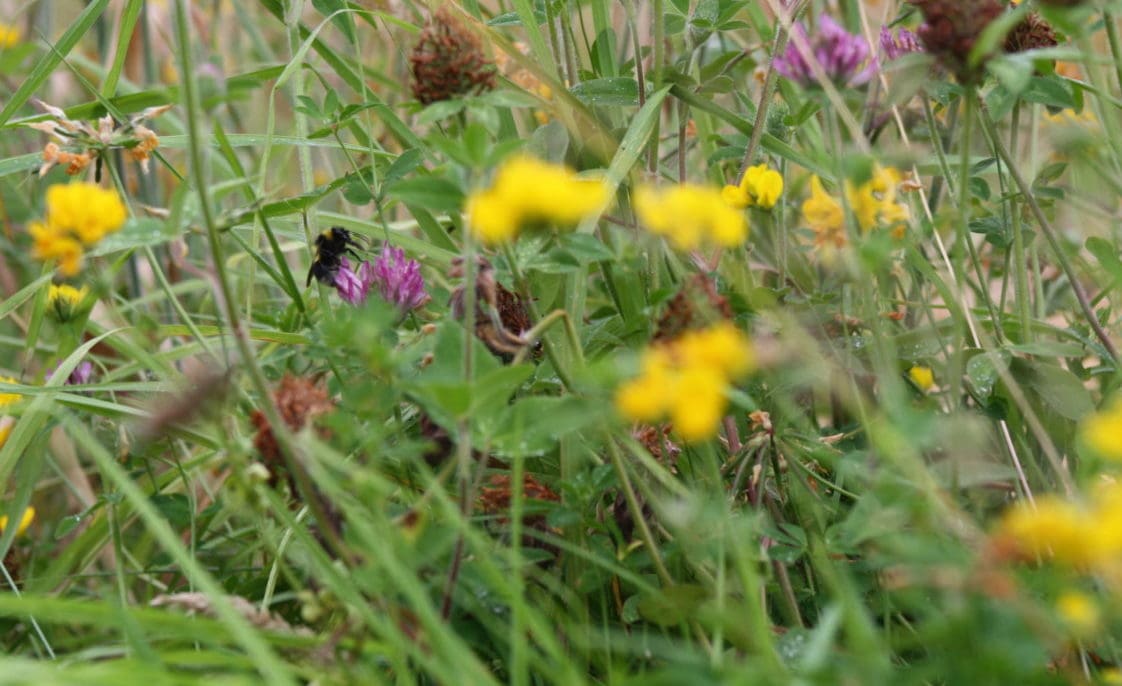A Planting Plan to Entice the Beneficial Insects


Prepare to be amazed at the amount of larvae gobbling, pest destroying action going on around you in the micro. Beneficial insects keep your garden sorted. There's an army on your side: parasitic wasps, hoverflies, various bees and ladybirds, praying mantis, spiders, dragonflies, assassin bugs, lacewings, a variety of beetles, frogs, birds and earwigs (yes, earwigs!). They manage pests, pollination and recycling of debris in return for a safe haven ie your spray free backyard + a years supply of food. To sustain them you need an attitude of gratitude towards a few pests: they're feeding the good guys.
Three things will get you there - be spray free, create habitat and provide plenty of food.
Be Spray Free

Spray is an insidious thing - it travels far further than you imagine. Were it dyed and thus turned visible, you'd be appalled (unless the spray is seaweed!). Swap the spray for a roll on if you are dealing with an intense invasion of hard core vining weeds like convulvulus, kikuyu or ivy.
Beneficial insects are more susceptible to sprays of all kinds - whether herbicide or pesticide, than pests are. Making heavily sprayed gardens, ironically - more pest laden than spray free gardens.
Step away from the toxic spray and non selective natural sprays like pyrethrum.
Habitat

Home for insects means wild, undisturbed places. A selection of natives and perennials, rocks, logs and whatever size body of water your place can fit - whether it's a pond or birdbath. The more diverse the natural resources, the more diverse the life that comes to play. And the more diversity of life the greater diversity of pest management.
Leave bits of log/ wood tucked beneath trees/ shrubs to house bumblebees etc and encourage a swathe of beneficial below ground fungi to boot.
Year Round Food Supply

Nectar eaters and pollen gatherers need tiny, open flowers. Modern varieties are often lacking in nectar and pollen, so choose heirloom/ wild/ weeds and native flowers. A year's supply will keep them at your place (when the food runs out, so will they). Watch and see which flowers are the most beloved in your garden.
- flowering umbelliferae – coriander, parsnip, parsley, carrot, celery, dill, caraway, queen annes lace, bishops flower
- flowering clover - vetch, lucerne, lupin
- flowering brassicas - broccoli, mustard, radish, rocket
- some helpful natives - hebes, olearias, pittosporums, carpodetus, hoheria
- weeds like dandelion, yarrow and hawkbit are much beloved - let your lawn be wild!
Feeding the Beneficials Year Round

My Favourite Perennials
There are loads to choose from, heres a selection:
• Summer Flowering
Lavender, Echinacea, Golden Rod, Rudbeckia, Thyme, Marjoram, Oregano, Shasta Daisies, Bergamot, Yarrow, Lemon Balm, Buddleia, Anise Hyssop, Salvia, Corokia, Hoheria, Comfrey, Perennial Leeks, Artichokes
• Autumn Flowering
Sedum, Caryopteris, Rudbeckia, Thyme, Marjoram, Oregano, Sage, Yarrow, Lemon Balm, Anise Hyssop, Salvia, Echinops, Chicory, Artichokes
• Winter Flowering
Hellebores, Wallflowers, Rosemary, Sage, Hebe, Pineapple Sage, Anise Hyssop
• Spring Flowering
California Lilac, Lavender, Hellebore, Wallflower, Sweet William, Dianthus, Flax, Bergamot, Yarrow, Anise Hyssop, Pittosporum

My Favourite Annuals
- Borage, Phacelia, Calendula, Marigold, Cosmos, Buckwheat, Poppies, Chamomile, Cornflower, Nasturtium, Alyssum, Verbena Bonaresis
Borage and Phacelia are high in nectar and refill quickly, making them the perfect fit amongst fruit trees and vegies. They self seed readily - you only need to sow them once, and they'll flower nearly all year from a succession of self sown plants.
